Evaluating energy storage for your solar IoT
Evaluating energy storage for your solar IoT
The performance of an energy harvesting system depends not only on the energy collected from the PV cell but also on how efficiently that energy is stored and utilized. Continuing our exploration of solar IoT harvesting systems, this second part of the series focuses on evaluating energy storage (see the first part here). Batteryless IoT does not mean operating without energy storage; on the contrary, these systems almost always rely on a battery or a supercapacitor to buffer and deliver harvested energy. You must accurately characterize how the energy is stored and supplied to determine whether your system stays energy net-positive under varying conditions.
In this article, we showcase the method and tools you can use to assess energy storage performance, including charge/discharge behavior, storage capacity, and efficiency. Building on the photovoltaic (PV) cell evaluation from the first part of the series, this look at storage will help you design more resilient, sustainable solar IoT applications capable of reliably operating on harvested energy.
Energy harvesting system and storage under evaluation
In this study, we continued to explore the topic using the xG22-EK8200A Energy Harvesting Kit from Silicon Labs. We used the following components from the kit and a PV cell from our collection:
- Silicon Labs BRD8201A Dual Harvester Shield (based on e-peas AEM13920 PMIC)
- TPLC-3R8/10MR8X14 lithium capacitor (Tecate 10F 3.8V)
- Voltaic Systems photovoltaic cell P121 R1H for outdoor use
While PV was chosen for accessibility, the same testing method works for low-light photovoltaic cells, including those from Voltaic and similar providers.
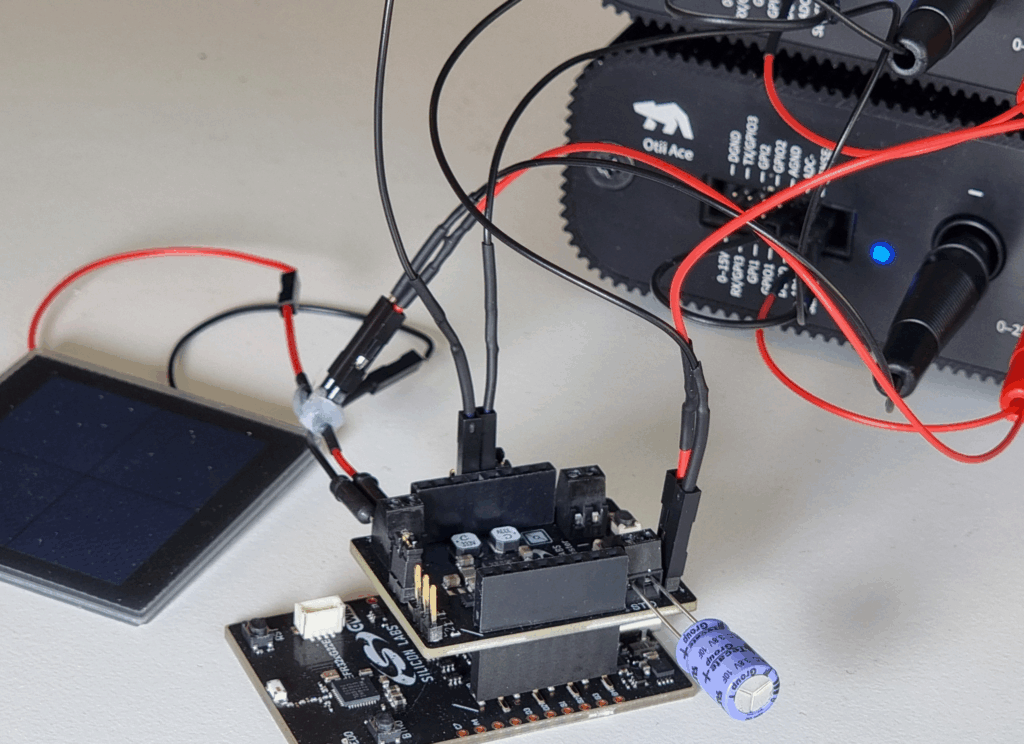
How to evaluate energy storage
The setup for this evaluation consisted of an Otii Ace Pro device connected in-line (Ampere Mode) with the Tecate lithium capacitor. In this configuration, you connect the measurement device in series with the energy storage, allowing it to measure current flow both into and out of it. We recommend using a 4-wire connection to measure the voltage via SENSE+ and SENSE-. Without the 4-wire connection, the Ace measures only its internal voltage drop.
Because this article is part of our energy harvesting series, we extended the setup to measure both the PV cell and the IoT device. This required three Otii Ace Pro instruments, as shown in Figure 2. To evaluate the flow of energy in and out of only the energy storage, it is enough to connect the Otii Ace Pro inline with the supercap. See the Otii Ace Pro labeled Ace_Storage connection in the schematics in Figure 3 below.
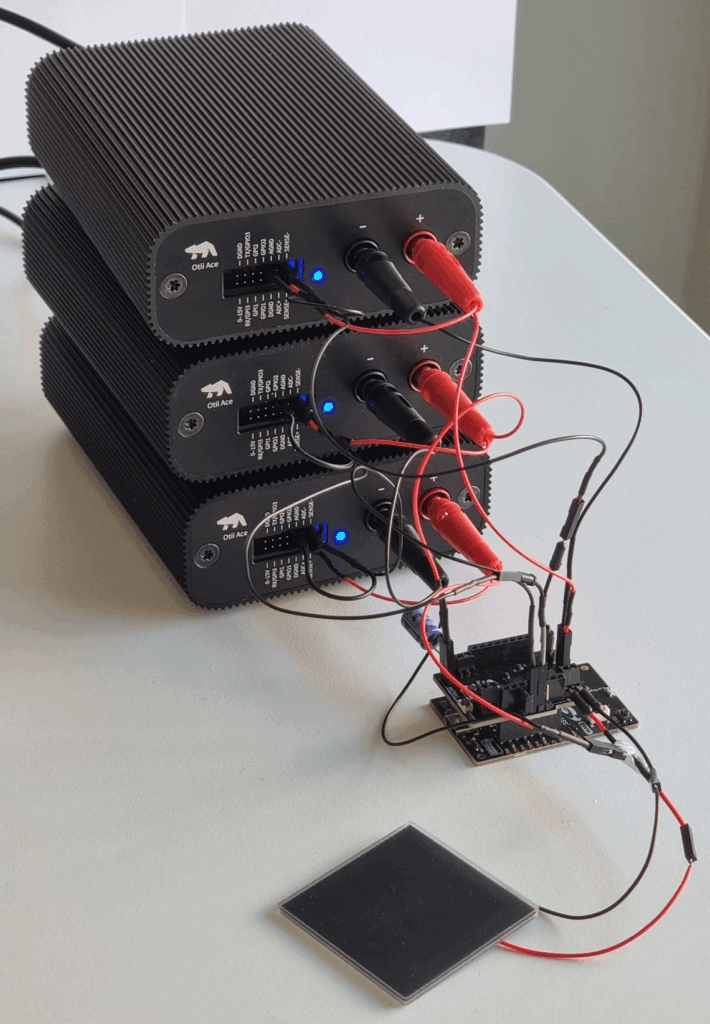
Here is the schematic of the measurement setup:
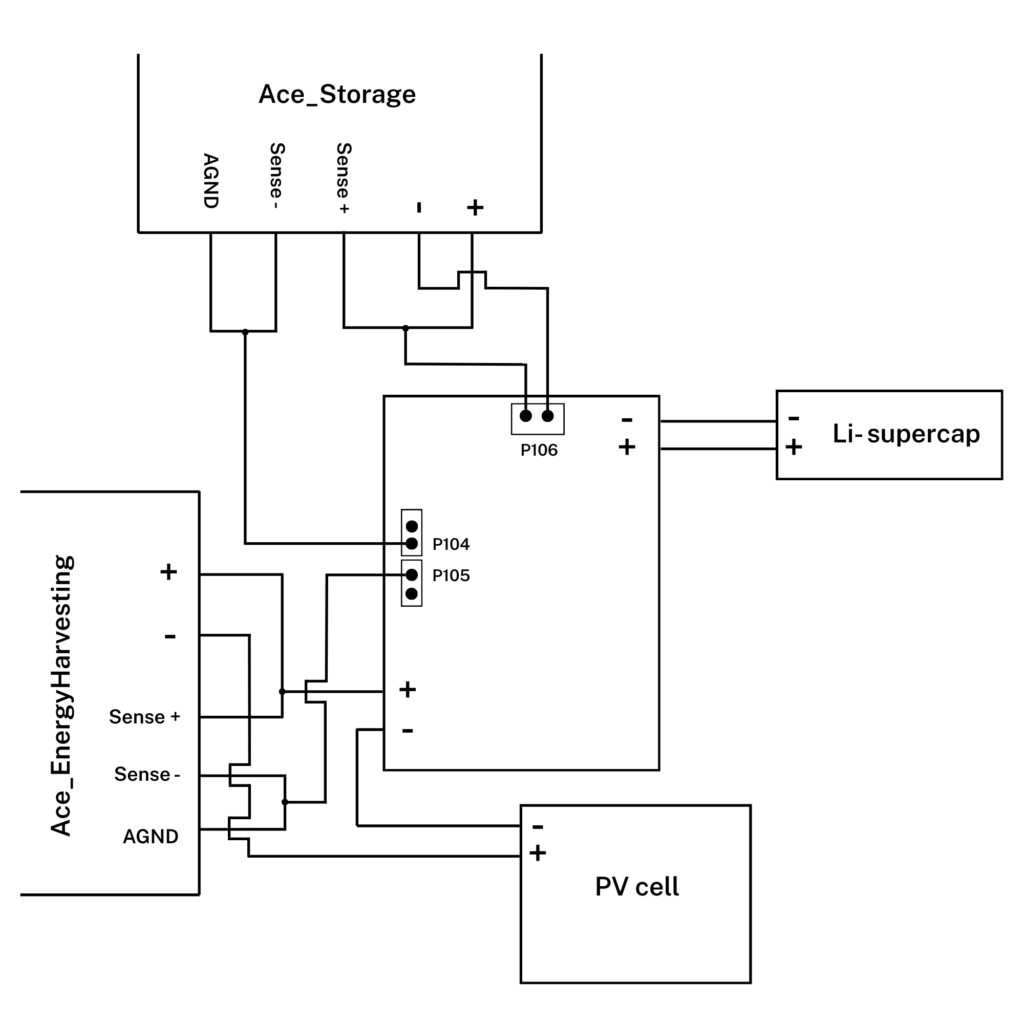
Fig 3. Schematic setup for measuring energy storage (Ace_Storage) and PV cell (Ace_EnergyHarvesting) performances on Silicon Labs xG22-EK8200A Energy Harvesting Kit.
Energy storage performance in the solar IoT use case
By analyzing the current and voltage measurements from the Otii Ace Pro (Ace_Storage), which monitors energy flowing into and out of the energy storage, we can observe both the energy storage voltage and the direction of current flow. In this setup, a positive current indicates supercapacitor discharge, while a negative current indicates charging of the supercapacitor.
In Figure 4, the highlighted section shows the Silicon Labs xG22-EK8200A waking up and transmitting data via BLE. During this activity, the average current is positive (see the data in the Statistics view in the graph in Figure 4), indicating that the chip is drawing more power from the storage than the energy harvester supplies at that moment.
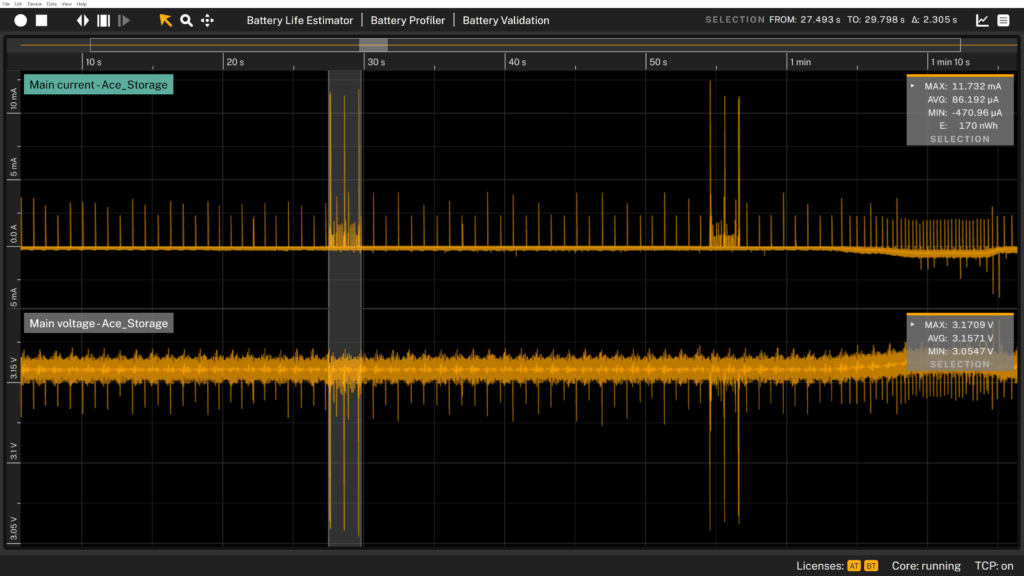
However, when observing the entire period cycle of transmission and sleep, the average current and energy values are negative, as shown in Figure 5, especially the values in Statistics. This means the energy harvester supplies more energy than the chip consumes during idle time, allowing the storage to recharge. In this case, the system is self-sustaining – the pairing of the energy harvester and the energy storage for the application and the chipset is ok for this use case.
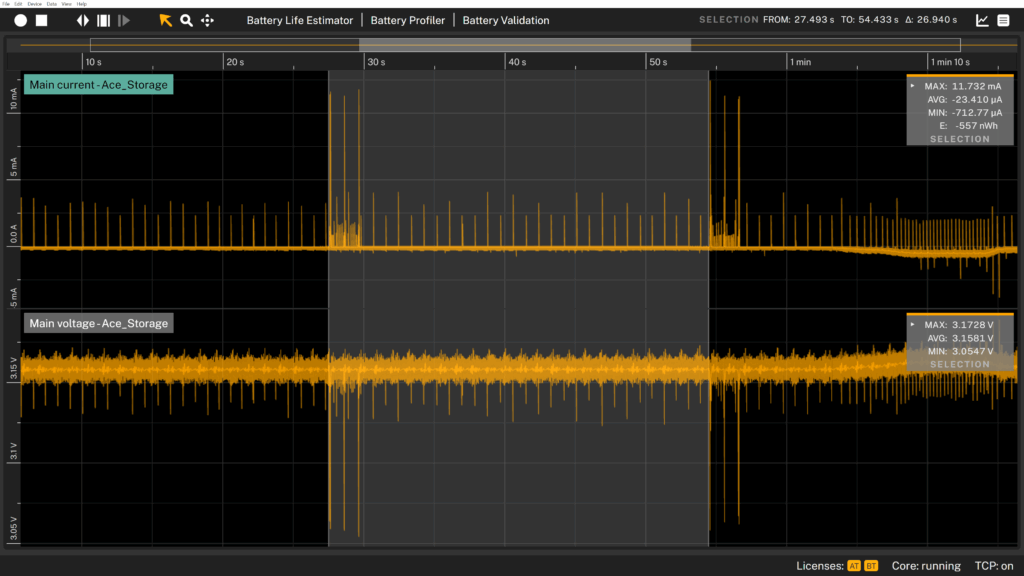
To confirm long-term energy balance, you should take these measurements over an extended period to ensure the energy harvester continues recharging the storage sufficiently during low-light conditions or extended periods without light.
In this article, we have only looked at the behaviour when there was light available, both from the fluorescent ceiling light and the sunlight outside the window. In a real-world use case, there will be a lot of variations, such as outdoor use cases with rainy days or a winter period where there might be no or very low availability of sunlight. Indoor scenarios differ since ceiling lights can be off at night or for long holiday breaks.
Make sure to measure the majority of the different conditions and calculate to determine if the stored energy will be enough for the device to survive. Another factor that will affect the system is the aging of the energy storage. An aged supercapacitor or battery will not be able to store as much energy as a new one, and the internal resistance will also increase. Ensure you account for this effect in your evaluation by using the Ace_Storage in battery emulator mode, emulating both new and aged storage profiles.
Summary
In this article, we demonstrated how to evaluate energy storage performance with Otii Ace Pro using a PV cell and the Silicon Labs xG22-EK8200A running a BLE application. The setup provided real-time insights into how the energy system supports duty cycles in a low-power solar IoT device. The setup allows for easy monitoring and analysis of the charging and discharging behavior of the energy storage, as well as understanding the full system energy balance, from harvesting the energy to storage and discharging.
While exploring how to assess whether your system maintains a net-positive energy balance under varying conditions, be sure to check out our article on PV cell performance evaluation.
Ready to dive into energy harvesting? Mouser, our trusted partner, has assembled all the necessary components – just one click away from here.
Join us at The Things Conference 2025 on 23-24 September at booth B21 to explore this further with our partner Silicon Labs.
Sign up for more tech insights
A monthly dose of articles, tips & tricks, and know-how – everything you need to extend battery life in IoT and embedded devices.